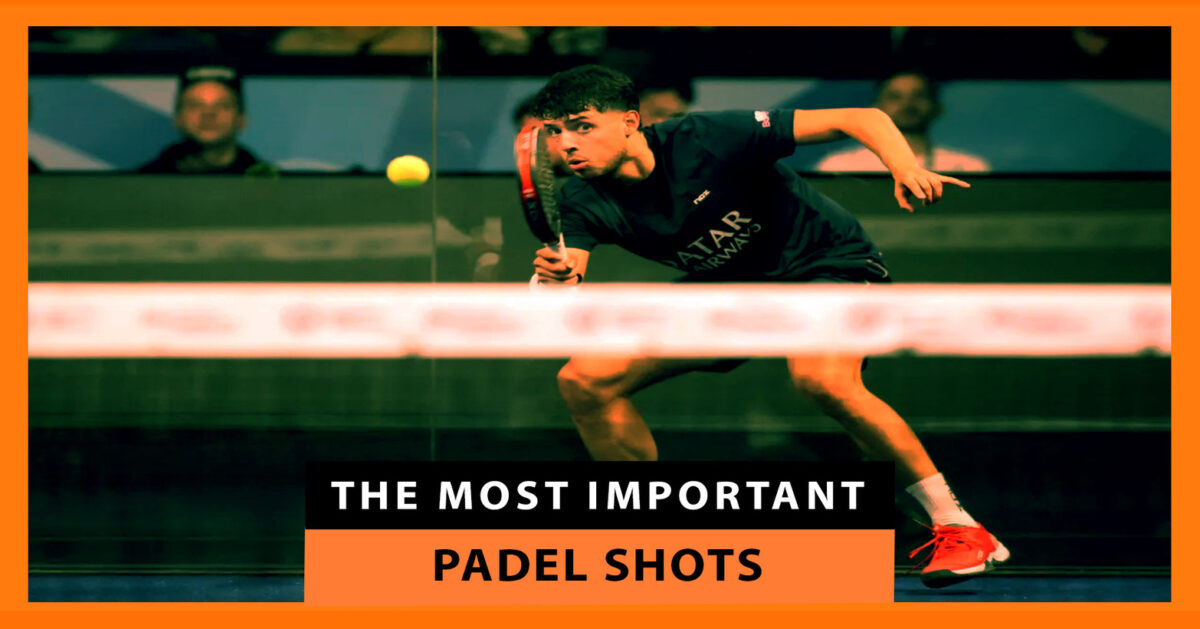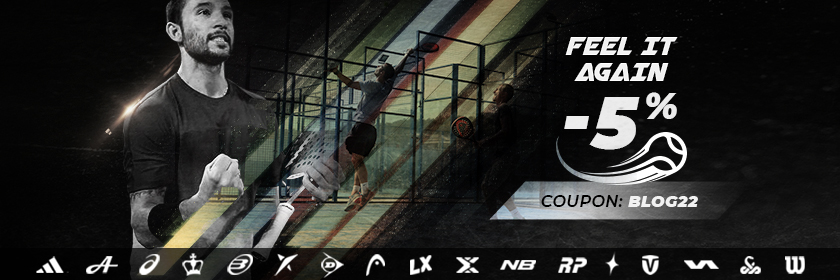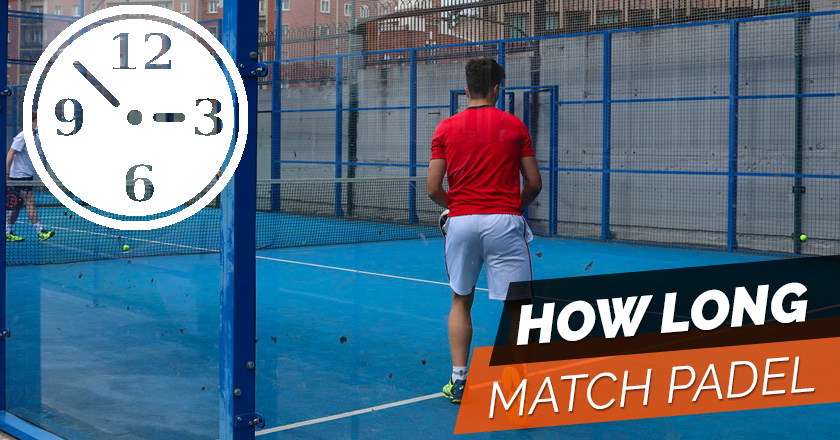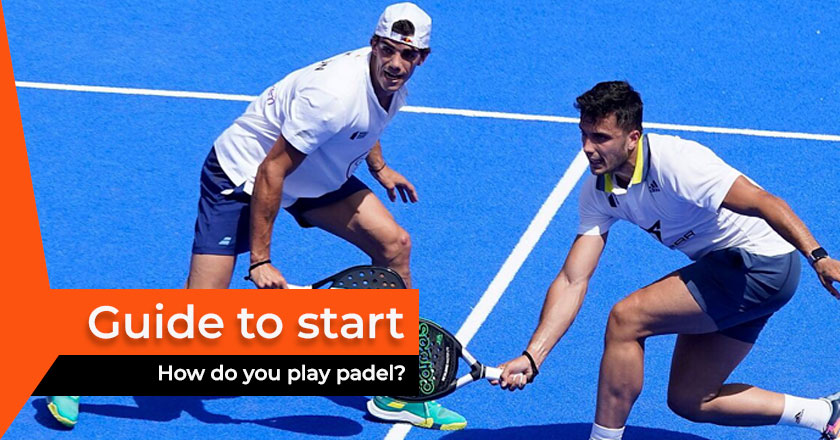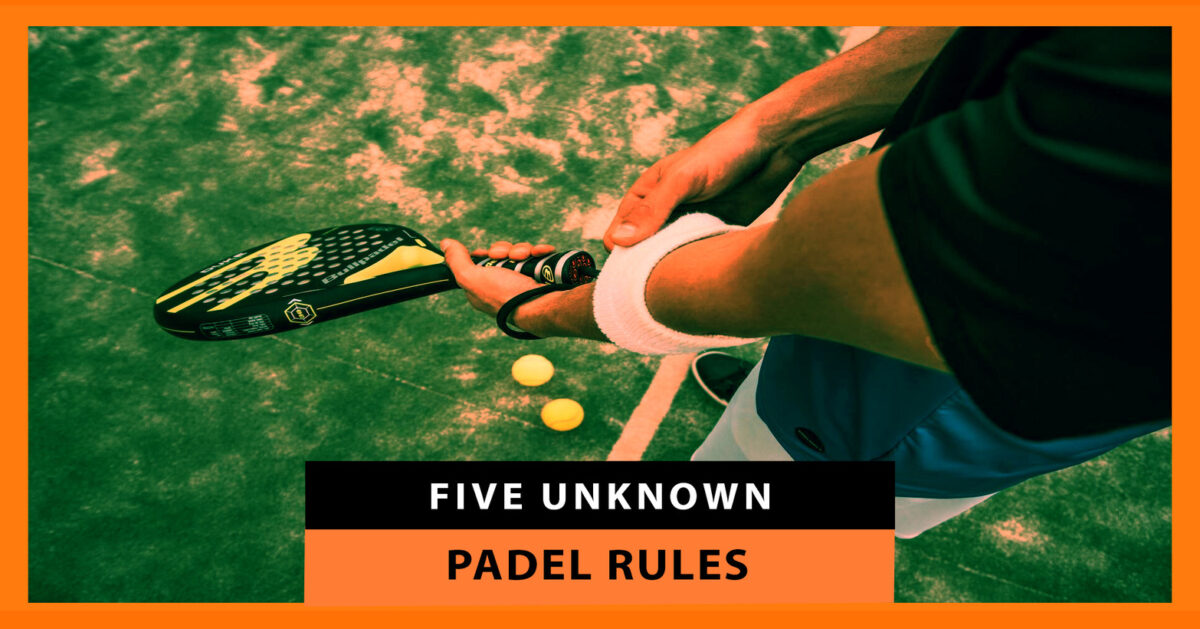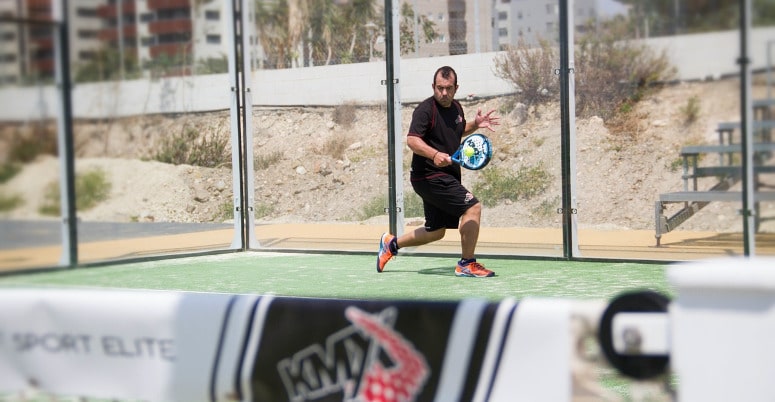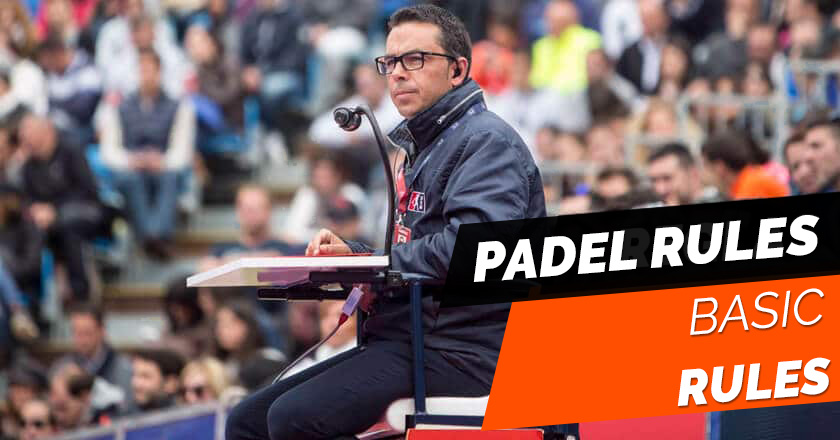Are you starting to venture onto the courts and still don’t know the most representative shots of padel? In today’s article, we name them and tell you how and when they should be executed.
The list of the most important padel shots
Padel shares shots with other disciplines such as tennis, although it has many others that truly make up its essence.
These are the shots that every padel player worth their salt should know:
The serve: the eternally underrated
The serve is one of the most important shots and the one that is often paid the least attention at amateur levels. Well executed, it exponentially increases the chances of winning the point.
It’s important to remember that the height of the bounce when hitting the ball must not exceed the waistline for the serve to be valid. It’s also not allowed to step on the serve line during the hit.
As an alternative to the traditional serve, we find the “Nerone serve”. This shot is named after its creator, former world number one Seba Nerone, who changed the rules of serving by starting to hit the ball with a backhand despite being right-handed.
The lob: the key to padel
The simplest shot to perform and at the same time one of the hardest to choose depending on the game situation. It allows you to overcome opponents from above to switch from defense to attack.
A lob is considered good when it bounces beyond the middle of the opponents’ court, and even better when it bounces behind the serve line. It is advisable to perform it when the ball comes in a comfortable situation, as otherwise it may fall short and the opponent ends up defining.
There are variations in the lob. It is said that a lob is “pinched” or “rained” when it gains a lot of height. It can be very effective when the match is played outdoors and climatic aspects like wind or sun may affect the game.
On the other hand, the “cut” lob is the one that is performed with effect and gains less height than a traditional or “rained” one. The aim of this shot is to overcome the opponent from above and that the ball hardly offers any bounce when it touches the glass.
The volley: keeping the net as the main goal
The volley is the shot that is most performed close to the net. It serves to keep opponents defending at the back of the court and thus have the possibility to define the point when they make a mistake.
It is advisable to perform deep volleys that bounce close to the serve line so that the opponent hesitates between letting it pass to bounce on the glass or hitting it before. It is also important to vary the direction of the volleys so that opponents have to keep moving continuously and make returning the ball difficult.
A common situation related to this shot is the volley duel, which occurs when all four players are close to the net volleying with the aim of defining the point.
The bandeja: the most characteristic symbol of padel
The bandeja is the most used shot in padel. Its name comes from the way the shot is prepared, very similar to the posture adopted by a waiter when carrying a tray in his hand.
The purpose of the tray shot is to keep the opponent away from the net. A bandeja is considered good when it is deep and does not offer much bounce on the glass. Like with volleys, it is recommended to vary the direction of the bandeja to force the opponent to turn when the ball bounces on the glass, which makes the return difficult.
A bandeja is defensive when it serves to return the ball slowly after a good lob from the opponent, while the offensive one has a greater speed to limit reaction times. Variations include Alejandra Salazar’s “bande-globo”, who invented this shot by merging both concepts to deceive her opponents and gain time on the court.
The smash: not very aesthetic but effective
This shot is similar to the tray shot but is performed when the ball is just above the head. As its name suggests, it involves imitating the movement of a hook when hitting the ball.
It’s a defensive and difficult to perfect shot as it forces the player to make an unnatural movement.
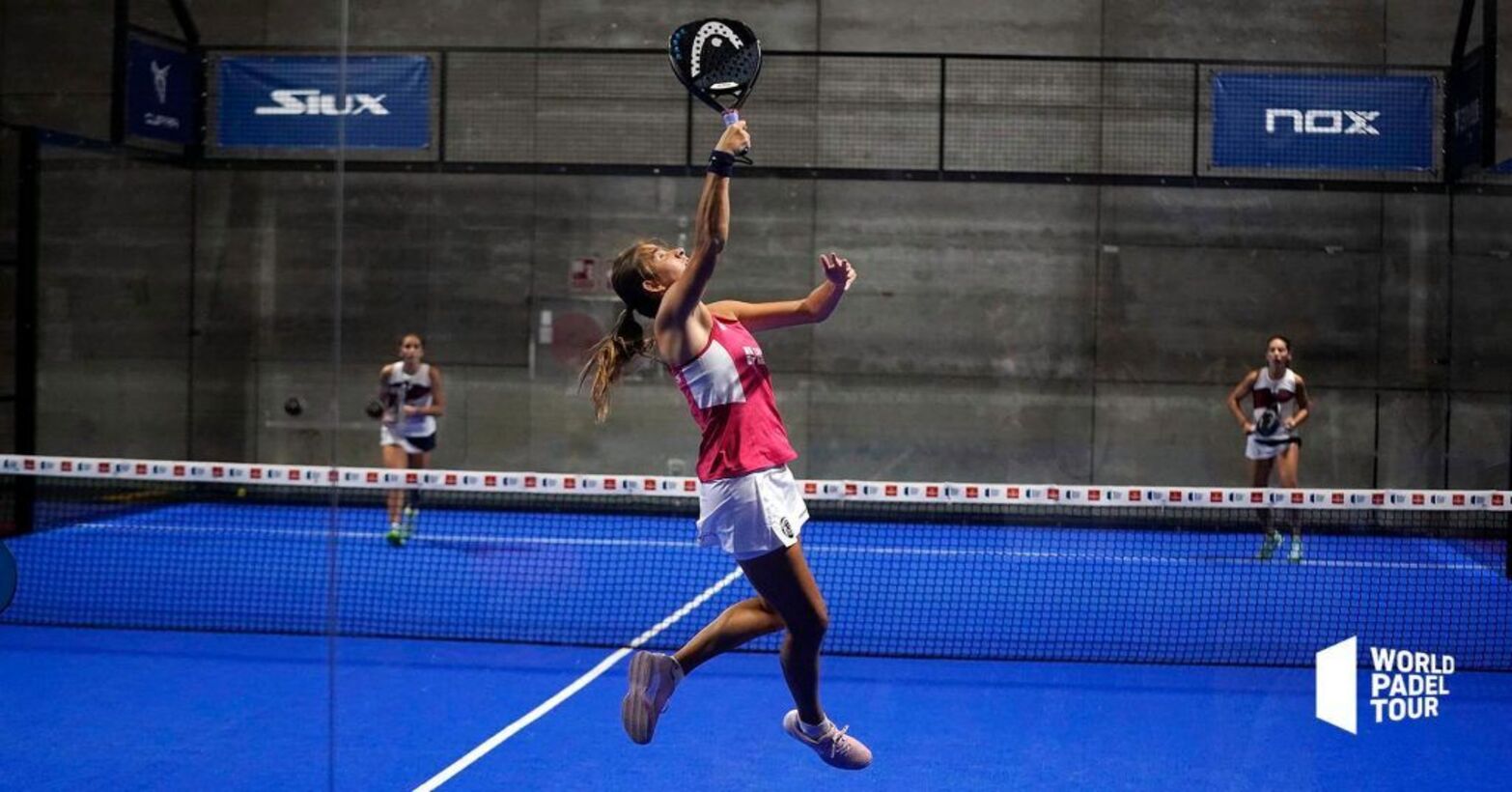
The víbora: where effect and power merge
It’s one of the “spiciest” shots that can be performed in padel. It mixes characteristics of the bandeja shot along with the effects and power given to the smash. At amateur levels, it’s a winning shot, while among professionals it is considered a shot designed to pressure the opponent and maintain the attacking position.
The chiquita: designed to surprise
It is a shot performed in defensive positions and is the precursor to a transition to attack. A good chiquita makes the ball pass very close to the net at a medium-slow speed that limits the opponents’ response when they are attacking. It allows changing the rhythm of the game and, if performed correctly, creates an advantage to move up to the net to volley.
It is recommended to perform the little shots with “margin”, meaning, it’s not a matter of millimeters for the ball to pass the net. It’s a great alternative in defense so that opponents do not get used only to receiving lobs or mid-height balls when they are in attacking positions.
Off the wall and off the wall smash: Sound similar, but they are not the same
These two shots tend to be confused, but they are different as they are used in different situations of the game. The off-the-wall occurs in a defensive phase when the ball coming from the opponent generates a low bounce after touching the glass. In this situation, from the off-the-wall comes a shot simply meant to pass the ball to the other side of the net.
On the other hand, the of the wall smash has offensive connotations. It’s the shot performed when the ball is at a considerable height after bouncing on the glass. It resembles in execution a smash that is performed from the back of the court.
The back wall boast: A lifesaver or a resource for attacking?
It’s one of the most used shots to keep the point alive in compromised situations. It consists of hitting the ball against the glass with the aim that the rebound goes towards the other side of the court. The advisable thing is to achieve that the ball hits as high as possible so that the rebound surpasses the opponents from above.
The back wall boast can also be performed using the lateral glasses, creating effects and generating indecision in the opponents. One of the best points in the history of padel featured a lateral wall boast:
The smash: (almost) always definitive
It’s one of the most used shots to define points. It has many different versions and all of them are valid, although generally, there are two that stand out from the rest: the smash over the fence and the smash over the back wall.
We talk about the smash over the fence when the ball bounces on the back glass and leaves the court over either of the two lateral walls that measure three meters in height.
On the other hand, the smash over the back wall is the one that does not offer any bounce and, if executed successfully, ends the point. It is usually performed very close to the net, making the ball bounce on the ground and subsequently surpass the limits of the back wall, which measures four meters. Once it surpasses it, the point automatically ends as the ball is considered out of play.
The rulo to the fence: always unpredictable
Its execution is similar to that of a smash, though the goal is for the ball to bounce on the fence so that the opponent doubts about the subsequent direction it will take.
It’s a very effective shot in seasons like winter when the ball does not bounce as much due to low temperatures. One of the players who most dominates the rulo to the fence is the “Chaqueño” Franco Stupaczuk, making it one of the pillars of his game:
The drop shot: a stroke that can be soporific…
The purpose of this shot is the same as in tennis: gently hit the ball with spin so that it passes very close to the net and bounces twice before the opponent can reach it.
One of the players who most dominates this shot is the ‘Wolf’ Juan Lebrón, who has invented his own version: “the dormilona”. It’s a drop shot performed on the counterattack after a smash from the opponent that bounces on the glass without gaining enough height to win the point:
The willy: spectacular when it appears
It’s one of the most magical shots that can be seen on the 20×10. It’s performed with the back to the net and hitting the ball under the legs with the paddle close to the ground.
It’s often used as a resource in padel that leads to magical points, like this one from Momo González at the past Milan P1 of Premier Padel:

 Español
Español
 Belgique
Belgique
 English
English
 Français
Français
 Italia
Italia
 Nederland
Nederland
 Sverige
Sverige
